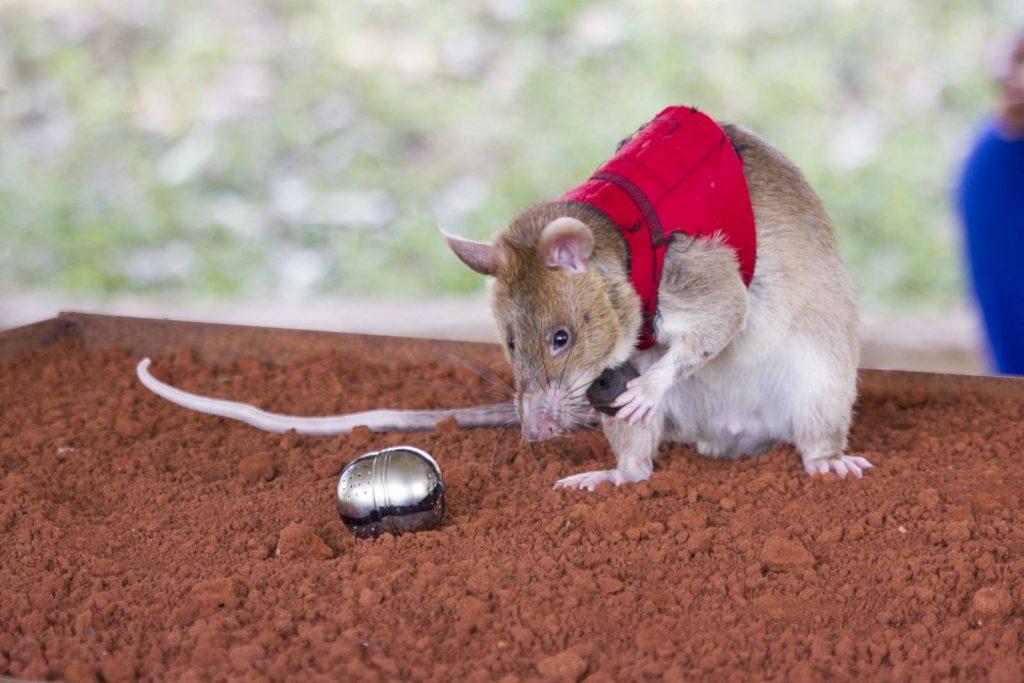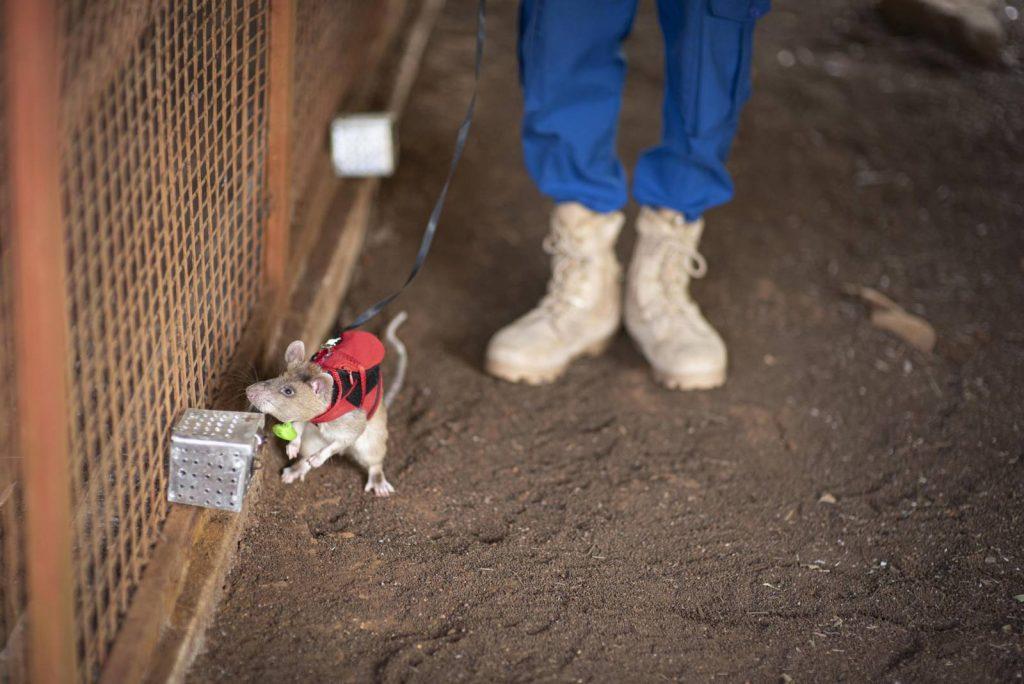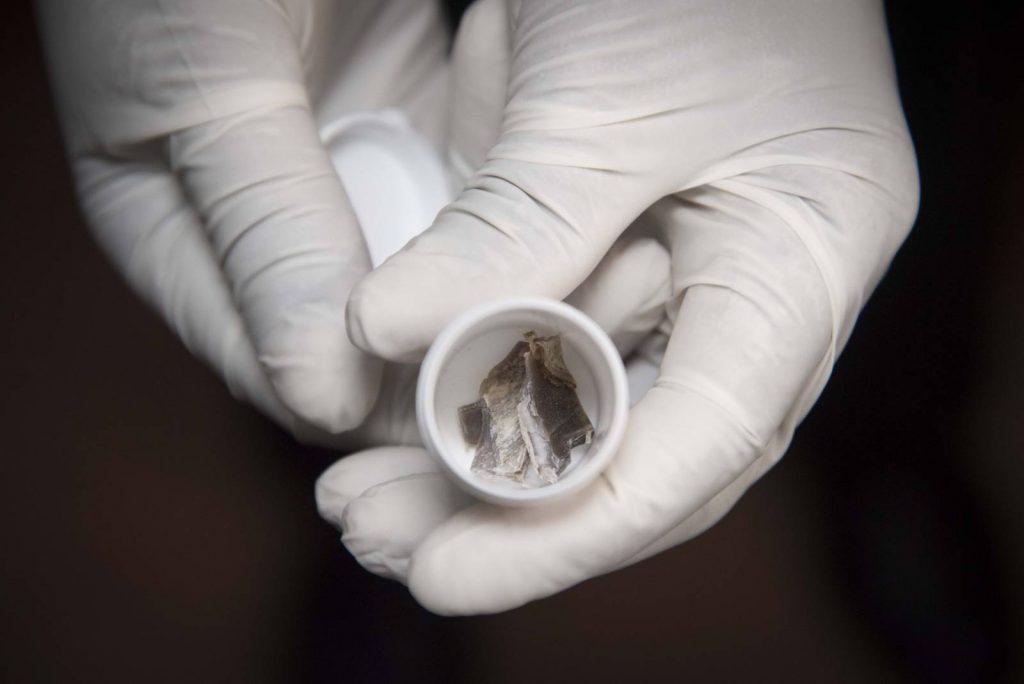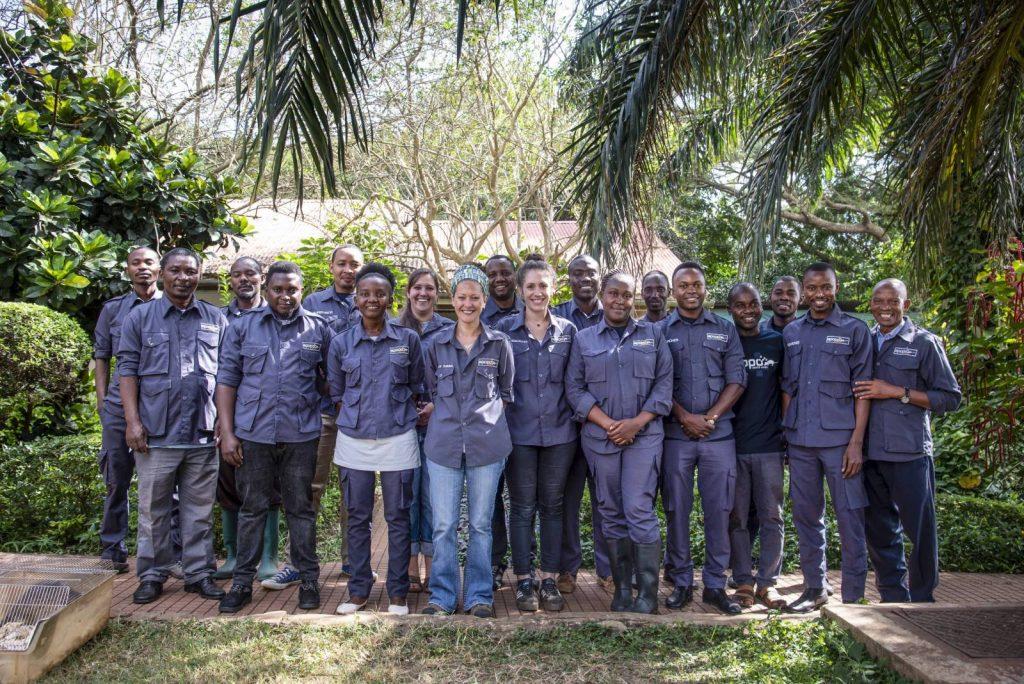The multibillion-dollar illegal wildlife trade poses a major and growing threat to biodiversity, pushing species including pangolins, African elephants and rhinos closer to extinction.
Now an unlikely little hero is being trained to sniff out smuggled wildlife products stashed inside shipping containers — the African giant pouched rat.
The innovative Belgian nonprofit, APOPO, in partnership with the Endangered Wildlife Trust (EWT), a conservation NGO in South Africa, has been researching the abilities of the rodents to detect illegally trafficked wildlife products at APOPO’s base in Tanzania.
The rats, which weigh between 1kg and 1.3kg, have a highly developed sense of smell, are intelligent and easy to train, locally sourced and widely available. The nonprofit already uses these scent-detection animals, nicknamed HeroRATS, to find landmines in countries such as Mozambique and Cambodia and for tuberculosis detection in Tanzania, Mozambique and Ethiopia.
 (Photo courtesy of APOPO)
(Photo courtesy of APOPO)
Rats to the rescue
Obeid Katumba, the wildlife and law senior project officer at the EWT, said one of the core focus areas of its Wildlife in Trade Programme is the detection of trafficked wildlife and wildlife products.
The Detection Rats project was the brainchild of former EWT staff member Kirsty Brebner and was initiated in 2016. “It was developed because international ports are known routes for smuggling large volumes of wildlife, and these ports represent a particularly challenging environment for law enforcement officials to work in,” he said.
Standard screening methods are expensive, time-consuming, and potentially disruptive to
operations, especially if customs officials have to open up and visually search shipping containers for suspected wildlife contraband. Coupled with this, organised criminals are innovative and find ways to circumnavigate these screening methods, he said.
The EWT considered alternative, complementary screening methods to detect and deter wildlife smuggling. “We knew about APOPO and the work they did with the African giant pouched rats to detect landmines and to screen for tuberculosis using the rats’ incredible sense of smell and we thought that this ability might be transferable to the detection of wildlife contraband, much like dogs are used to find wildlife products.”
 Once it had been demonstrated that rats were able to detect wildlife products – initially pangolin scales and hardwood – the next step was to train them to find other wildlife contraband in shipping containers. (Photo courtesy of APOPO)
Once it had been demonstrated that rats were able to detect wildlife products – initially pangolin scales and hardwood – the next step was to train them to find other wildlife contraband in shipping containers. (Photo courtesy of APOPO)
Detecting pangolin scales, hardwood
APOPO had been supporting a wildlife detection programme using dogs for conservation purposes for years and had some experience in this arena. “APOPO had not previously used the pouched rats to screen for wildlife so the initial project goal was to test the rats’ abilities to detect wildlife as a proof of concept.”
Once it had been demonstrated that rats were able to detect wildlife products – initially pangolin scales and hardwood – the next step was to train them to find other wildlife contraband in shipping containers.
In a mock port environment, according to APOPO, the rats learnt to wear a vest and trigger an electronic microswitch when they located a wildlife target. They showed their versatility by successfully searching a grid of boxes, some containing a target, while either guided while on a long leash or rigid pole or freely searching.
 Pangolin scales (Photo courtesy of APOPO)
Pangolin scales (Photo courtesy of APOPO)
Rat race
There are 16 rats in the project, which are trained at APOPO’s training facility on the campus of Sokoine University of Agriculture in Morogoro from Monday to Friday, said the project’s lead researcher, Izzy Szott, a behavioural research scientist.
“Our rats are transported to their training site where they are trained on different search strategies such as searching inside containers or along a line-up of items.”
Every day, they encounter a range of samples, mostly non-targets, which are items they are trained to ignore. “Among the samples are also a few wildlife targets such as pangolin scales. If rats correctly identify those wildlife samples, they are rewarded with food.”
After training, the rats are done for the day but the trainers and researchers still have additional activities such as cleaning, maintenance, planning the next steps, analysing data, writing reports and attending meetings.
“Because we are still developing this project, there really isn’t a ‘set schedule’ yet and things change and adjust all the time; this also makes it really exciting and challenging,” she added.
‘Incredible sense of smell’
The rodents are a potential asset in the fight against wildlife crime. They have a “fantastic” sense of smell, comparable to dogs. Another plus is the rats work with any trained handler and, unlike dogs, are not focused on a specific person.
“They are also very cost-efficient to breed, house and transport, which makes them a low-cost alternative,” she said, adding the rats are well adapted to sub-Saharan climate and are native to East Africa.
The team is developing steps to achieve the end-goal of rats screening containers for wildlife. “Often this means that we develop new protocols, which we then implement, monitor and evaluate, and then adjust. Some days this may be to develop a new training environment, some it may be new equipment to support our rats, or it may be changing to a completely new search strategy.”
 The rats have a “fantastic” sense of smell, comparable to dogs. (Photo courtesy of APOPO)
The rats have a “fantastic” sense of smell, comparable to dogs. (Photo courtesy of APOPO)
Positive reinforcement
One constant in any rat training is using clickers and positive reinforcement. “Our rats learn that the sound of a click means they receive a food reward, then they learn to perform a specific behaviour, which ‘makes us click’. If the rat does something wrong, they are never punished, they simply don’t hear the click sound and receive no food reward,” Szott said.
Some of the rats have been involved in the wildlife detection project since the day they were born, while others were part of other research initiatives before they joined the project.
“We even have some rats who did not do too well in landmine and tuberculosis detection but now shine in this [wildlife] project. This just highlights the importance of considering each individual rat’s personality and recognising that they have individual strengths and weaknesses.”
The rats earn a large portion of their daily food ration during training. “If they don’t perform too well, they still receive food but ‘only’ rodent pellets. During training, they can earn peanuts or mashed avocado, banana and pellets, which is a much nicer food for them and helps to keep them motivated.”
 (Photo courtesy of APOPO)
(Photo courtesy of APOPO)
Promising findings
The results look promising. “Of course, there were also lessons learned and we continue to learn from our rats about how we can best support their learning and help them along the way. But so far, our rats have always exceeded our expectations with their skill and resilience,” Szott said.
The next stage is operation trials, which involves testing how training translates to real world situations. This will teach the researchers what works and what needs adjusting.
“After that, we hope to be able to approach ports, governments and other parties about the potential of our rats in aiding the fight against the illegal wildlife trade.”
Katumba said the rats have shown a tremendous ability to detect wildlife contraband they have been imprinted on, during training and in controlled environments. “At this stage it appears that they can be a valuable addition to the current screening tools, such as x-rays and detection dogs used at transit ports.
“Also, because of their size when compared to dogs, the rats can access small spaces within a confined area and detect substances, which means that if this project is successful, one day it may no longer be necessary to always empty out a container to confirm whether it contains wildlife contraband.”
The EWT’s role is to identify wildlife transit areas for future deployment of the rats, “using our extensive conservation network across Africa”.
 The staff behind training the rats. (Photo courtesy of APOPO)
The staff behind training the rats. (Photo courtesy of APOPO)
Collaboration
Getting into and working in the ports is challenging, Katumba said. “It’s not only that the environment is extremely busy, but it requires a lot of collaboration with multiple stakeholders and authorities. It is not always easy to get the buy-in and collaboration from all relevant parties, and this is something which we will have to overcome in identified jurisdictions for this project going forward.”
If this project expands in the future, it will require a great funding effort. “It is only with the generous support of our funders that the project is progressing.”
The initial proof of concept was generously funded by the US Fish and Wildlife Service and the UK’s Illegal Wildlife Trade Challenge Fund, he said. Thereafter, the first feasibility test was funded by the Pangolin Crisis Fund, with follow up funding from the Wildlife Conservation Network, Pangolin Crisis Fund and the German Agency for International Cooperation. The trial phase of the training is supported by the Global Environment Facility-USAID funded project with the UNDP.
To adopt a HeroRAT, visit https://apopo.org/support-us/adopt/?v=68caa8201064
Rats assemble: Two nonprofits are training African giant pouched rats to detect smuggled contraband in shipping containers. (Photo courtesy of APOPO)